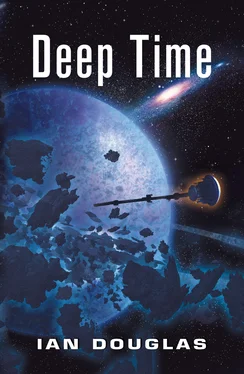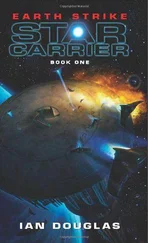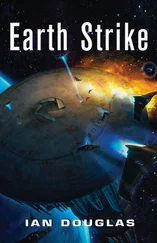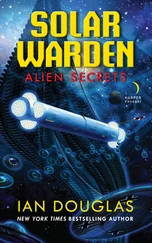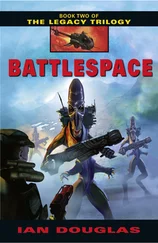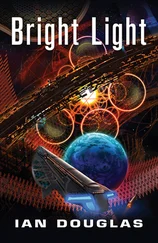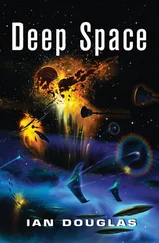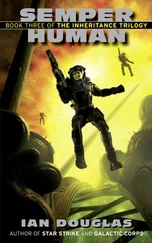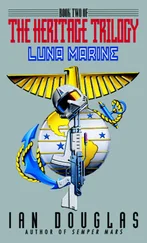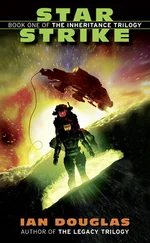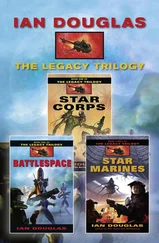“Whatever it is, Captain,” he told Roessler, “it’s coming in more or less on a vector from Omega Centauri.”
The research station’s personnel had been briefed, of course, on events out at the giant globular star cluster, the site of the enigmatic rosette of fast-circling black holes … and the Rosette Aliens. Not that it had done them much good.
The curve of Bifrost’s limb abruptly flared with blue and violet light … a rippling effect scattering out through the gas giant’s atmosphere. The aurorae at both poles brightened suddenly, then spread, engulfing the huge gas giant in seething flashes and pulses of auroral light.
“Are you sure it’s not the Americans?” Roessler demanded. “Some sort of high-velocity mass impact weapon …”
The USNA forces were notorious for their tactic of using clouds of sand released into space with speeds close to that of light. But Dressler was watching the cloud of minute particles spilling now across Bifrost’s horizon and the titanic half-glimpsed shapes behind the planet. Some of those shapes were bigger than Bifrost, measuring millions—even tens of millions—of kilometers across.
“I’m sure, sir.”
“But—”
“It’s not the Americans, sir. And yes, sir, I’m very sure.”
He checked on the position of the Confederation starships in orbit over Heimdall. One was currently above the antipodes, blocked from the alien cloud by the bulk of Heimdall itself.
“I suggest, sir,” he added, “that we dispatch the Kalmar back to Earth with a complete update.”
If , he thought, there was still time …
29 June, 2425
Marine 1/5
Fort Douaumont
France, European Union
0610 hours, GMT
The flight of Crocodiles shrieked out of the eastern sky, ventral thrusters hissing as they swung blunt prows toward the ancient fortress. Marine Staff Sergeant Gerald Swayze watched the stone walls below through his link with the Croc’s scanner array and prayed that this time Intel knew its ass from a hole in the ground.
The CL/BC-5 Crocodile was an ugly and ungainly piece of equipment: blunt, stubby, and no-nonsense, with a nano docking collar on its squared-off prow, broadly splayed landing legs, and a pair of turrets on its back that turned the landing craft into a semimobile fortress once it had completed its primary mission. In this case, that mission was transporting forty armed and armored USNA Marines from orbit to the surface of a hostile planet.
The hostile planet in this case was Earth, the objective a massive, centuries-old stone fortress deep within the territory of the European Union … a fortress known to history as Verdun.
“Stand ready, people!” Lieutenant Widner’s voice came through their in-heads, crisp and sharp. “Fifteen seconds!”
Swayze listened for any hint of fear or indecision there, but heard none. This was Widner’s first op as platoon commander, but he didn’t seem to carry the usual newbie CO baggage of arrogance or overconfidence in doing it all by the book. Mostly, that meant he’d been paying attention to his NCO staff in general and to Swayze in particular. With an attitude like that, they might actually be able to pull this op off.
“You apes heard the el-tee,” Swayze growled over the company tactical channel. “On your feet! Face front! When the nano kicks open the door, I want to see nothing but amphibious green blurs moving through that collar!”
“Amphibious green” was an anachronism, of course, but one long beloved of the Corps. Each Marine in the assault platoon was clad in full Mark I armor—the curving, black, nanoflaged surfaces scattering back a bewildering kaleidoscope of shapes, colors, and lights from the red-lit interior of the Crocodile transport. The nanoflage picked up on lights and colors surrounding the armor and transmitted it back. In the field, it provided what amounted to functional invisibility, but within the cramped confines of the Croc’s cargo deck it just gave you a functional headache.
A shudder ran through the Croc as it nosed into the fortress wall. According to the plans Swayze had seen, the wall here was two meters thick. It would take a few seconds for the collar to eat its way through that.
Something clanged against the Crocodile’s hull, sharp and insistent. Swayze heard the whine of the landing craft’s turrets slewing to port, followed by the howl of exciters and cooling pumps as the weapons opened up with a few thousand megawatts of high-energy laser response. Up forward, the docking collar was slowly extending, growing its way into the stone of the fortress wall, converting concrete and iron into free-flowing atoms and directing them along the tunnel’s interior surfaces where they froze as an ultra-hard crust supporting the opening. In space, a nano docking collar allowed Marines to tunnel through the hull of an enemy spacecraft without losing internal pressure. Here, pressure wasn’t an issue. They just needed to burrow through those two meters of concrete and steel … and do so before the enemy had time to respond.
When they were down to the last few centimeters, the Crocodile fired a series of probes through the remaining stone, putting insect-sized battlespace drones into the interior of the fortress. Swayze’s in-head showed what those drones were seeing—a dozen heavily armored Confed soldiers crouched in a broad stone tunnel, weapons ready.
This was not going to be pretty.
“We’ve got bad guys to either side of the entrance,” he told the others, “ and straight ahead. Lead fireteam, focus on the ones straight ahead. The ones to either side will be worried about scoring own-goals.”
The defense obviously had been thrown together in a hurry, with nearby soldiers rounded up and pointed at the breach site. Putting gunners on both sides of the breach was a great way to ensure that some of them would suffer friendly fire.
He didn’t envy the lead fireteam, though. Two of them were manhandling bulky mirror shields, but they would be taking fire from three sides.
“Here we go!” Widner called.
The Croc’s interior docking hatch dilated open and the waiting Marines surged forward.
“ Go! Go! Go! ” Swayze yelled.
The door kickers went through first, crouched behind their shields. Those mirrored surfaces—backed by energy-damping exotic-material ceramics—would give them a fair degree of protection from handheld lasers and projectiles, but not as much from plasma beams. Blocked by the armored shapes in front of him, Swayze couldn’t see what was happening up ahead; an in-head window displayed the heart rates of the lead fireteam, but not their helmet-camera feeds. He needed to be focused on the entire platoon, not just the tacsit of the four in front.
“Watch it! We’re taking fire!” That was Corporal Addison, in the lead fireteam.
“Gaynor is down! Man down!”
An explosion sounded from ahead, and the Crocodile rocked with the concussion. The Marines kept filing forward, though, smoke billowing back into the transport’s interior. Swayze stooped low as he entered the docking collar and pressed into the tunnel. He was positioned halfway back in the line, which meant there were twenty Marines—four fireteams—in front of him.
Then he was through, stepping into a narrow passageway with walls, floor, and ceiling all of stone blocks. Two Marines were down on the deck, both still moving; a dozen Confed troopers were visible in the passageways left, right, and straight ahead.
The Marines stormed the fortress.
Emergency Presidential Command Post
Toronto
Читать дальше
